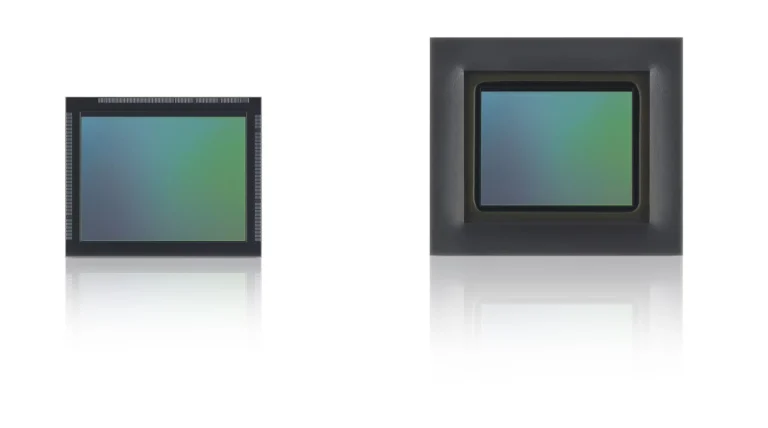Sony Semiconductor Solutions has announced the upcoming release of the IMX775 CMOS RGB-IR image sensor featuring the industry’s smallest pixel size, 2.1 µm. The sensor delivers both RGB and IR imaging on a single chip and a resolution of approximately five effective megapixels, and has been designed for in-cabin monitoring cameras.
The RGB-IR image sensor offers a high resolution and can capture wide-angle images of the interior of the vehicle, including the driver and passengers. It also delivers high image quality in both visible light (RGB) and 940nm near-infrared light (NIR) imaging on a single chip, with the industry’s highest near-infrared sensitivity and RGB dynamic range.
With the increasing need for advanced safety performance in automobiles, it is now becoming mandatory for vehicles to monitor driver status to support safe driving and prevent accidents. Laws and regulations are becoming more rigorous about confirming passenger body type, physical posture and seat belt use to ensure passenger safety. Against this backdrop, the image sensor will contribute to driver and passenger safety and help prevent accidents by enhancing the precision of in-cabin monitoring.

Enhanced visibility
The image sensor uses Sony’s proprietary pixel structure to achieve both the industry’s smallest pixel size and the near-infrared spectroscopy (NIR) sensitivity of the 940nm NIR wavelength. The high level of quantum efficiency (QE) in NIR contributes to high-precision recognition of the driver’s line of sight and passenger status, including low-light conditions.
The product is driven by a hybrid rolling and global shutter system for exposures to deliver 110dB dynamic range in RGB imaging. A signal processing algorithm is also used to remove NIR elements from the RGB pixels for on-chip processing, thereby delivering superb color reproduction.
The sensor uses a pyramid array structure inside pixels to enhance quantum efficiency (the conversion efficiency of light to electrons) even with the miniaturized pixel size. It also optimizes pixel structure to further increase photodiode capacity. Diffracting incident light to enhance the absorption rate delivers a high level of 35% quantum efficiency for a wavelength of 940nm, even at the small pixel size of 2.1 µm.
On-chip proprietary signal processing algorithm
In general, RGB/NIR sensors are prone to inaccurate color representation due to the unwanted presence of NIR light components in the RGB pixels. To address this, Sony uses a signal processing circuit with a proprietary algorithm to remove NIR components for superior color reproduction even under NIR lighting.
Furthermore, built-in signal processing with upscaling to improve NIR image resolution, along with context switching that extracts arbitrary pixel areas from each frame for output, enables an overall compact system without using an external ISP.
In related news, Seeing Machines DMS tech detects alcohol-impaired driving



